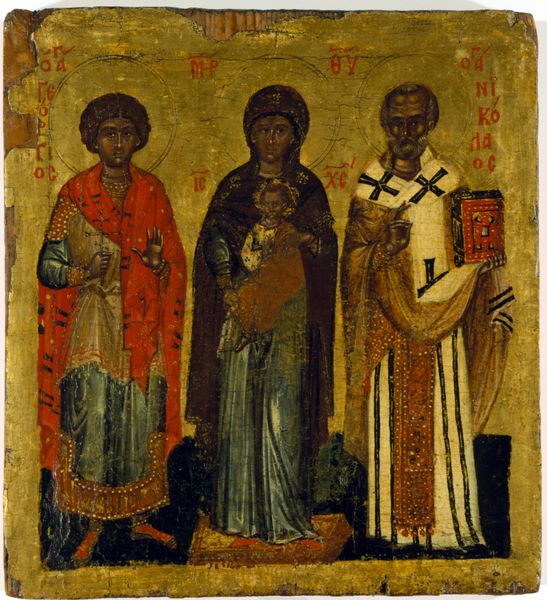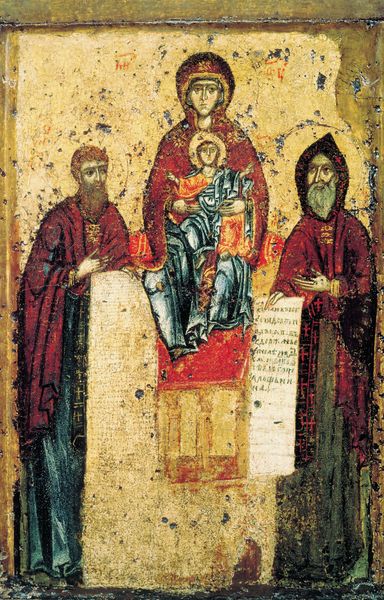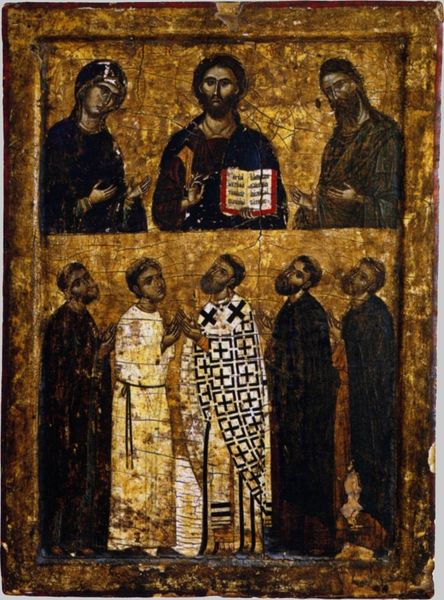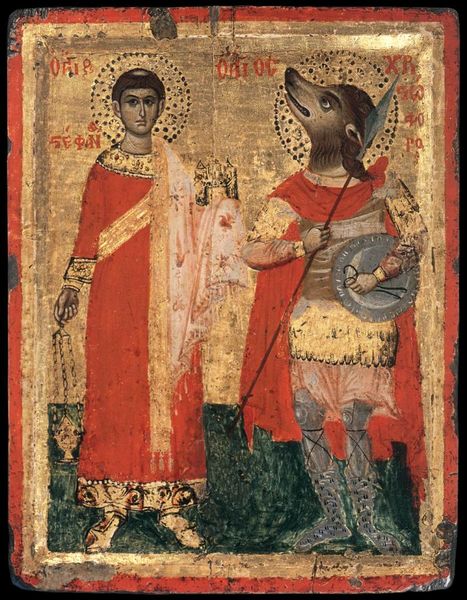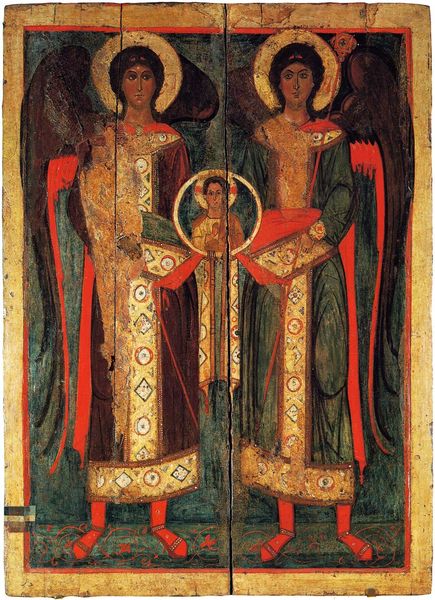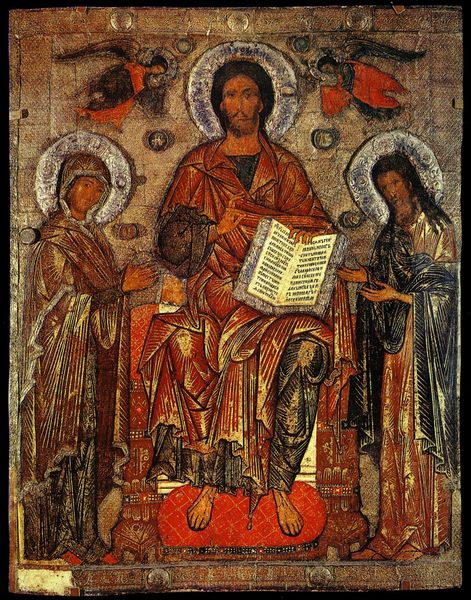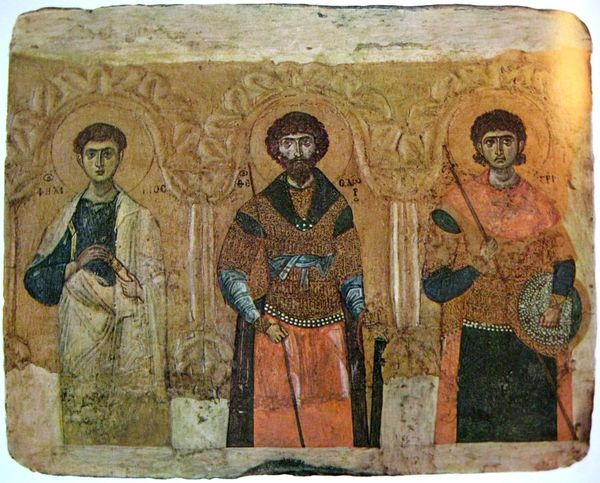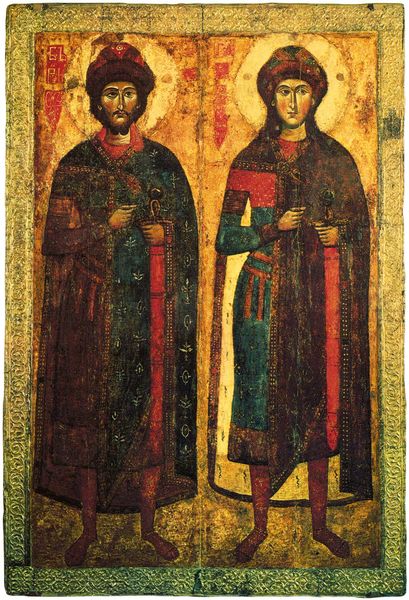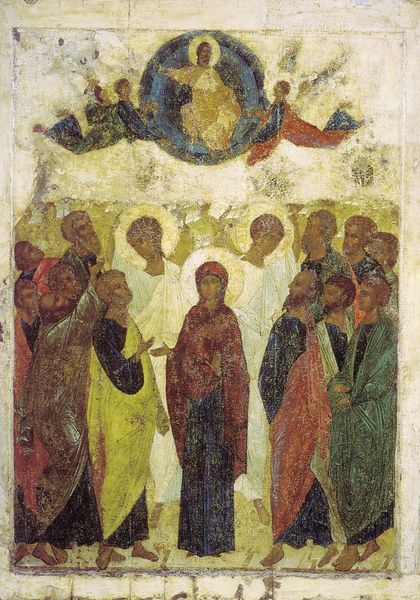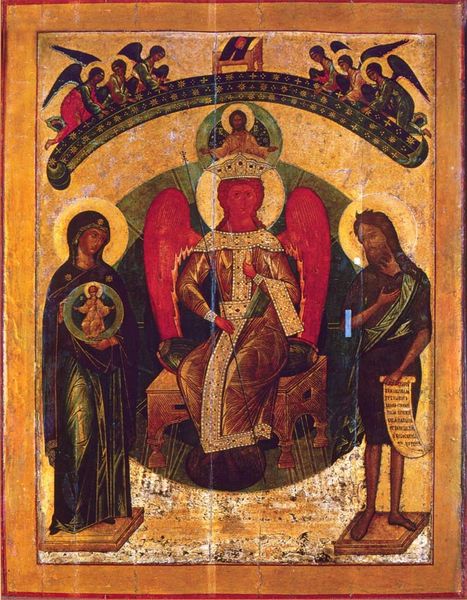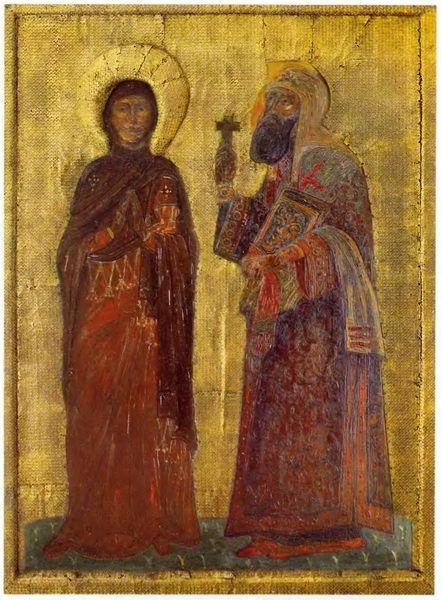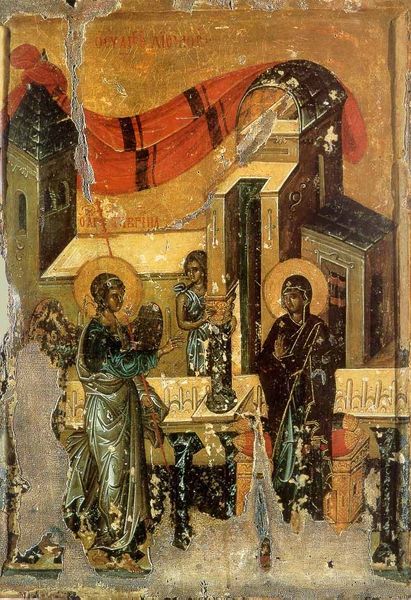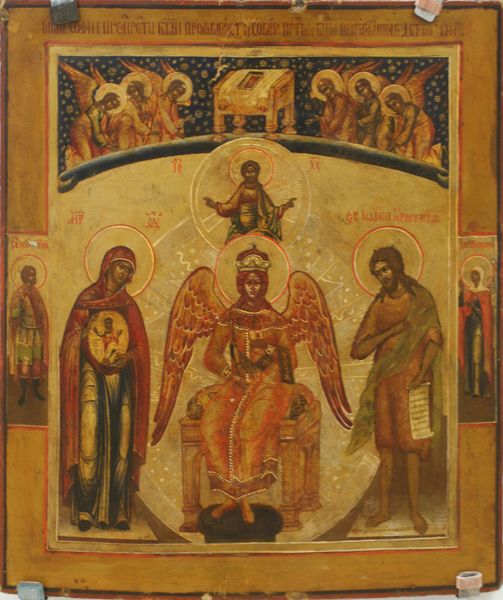
Saints Paul, James the Elder, Stephen, Lawrence, Martin of Tours, Leonard of Limoges 1195
0:00
0:00
tempera, painting
#
byzantine-art
#
medieval
#
tempera
#
painting
#
figuration
#
oil painting
#
history-painting
Copyright: Orthodox Icons,Fair Use
Editor: This tempera on panel, created around 1195, is titled "Saints Paul, James the Elder, Stephen, Lawrence, Martin of Tours, Leonard of Limoges." I'm struck by the way the figures seem to float against the gold backdrop, almost suspended in time. How would you interpret the iconography here? Curator: This image is dense with symbolism, carefully constructed to evoke specific emotional and spiritual responses. Each saint, identifiable by particular attributes – like Paul's book or Martin's bishop attire – contributes to a larger narrative about faith and virtue. Do you notice how their gazes draw you in, yet their postures are relatively static? Editor: Yes, there's a sense of formality, but also an intense engagement. The colors are rich, especially the reds and blues. Are there any repeated symbols across the Saints? Curator: Precisely. That controlled tension is a hallmark of Byzantine art, and serves to create an atmosphere of reverence. Consider the deliberate placement of hands in blessing or holding sacred objects; these are potent symbols of divine authority and intercession. Their frontal presentation emphasizes direct communication with the viewer. Notice also the use of hierarchic scale – where the more important figures might be slightly larger. What do you make of the gilded background? Editor: It seems to represent the divine, illuminating the figures from behind. This painting has a real depth and sense of purpose. Thanks for showing how symbols were used in medieval painting to impact and instruct the viewer. Curator: Indeed. It's about unlocking those encoded meanings and understanding the ongoing influence and cultural memory preserved through such enduring visual forms.
Comments
No comments
Be the first to comment and join the conversation on the ultimate creative platform.
